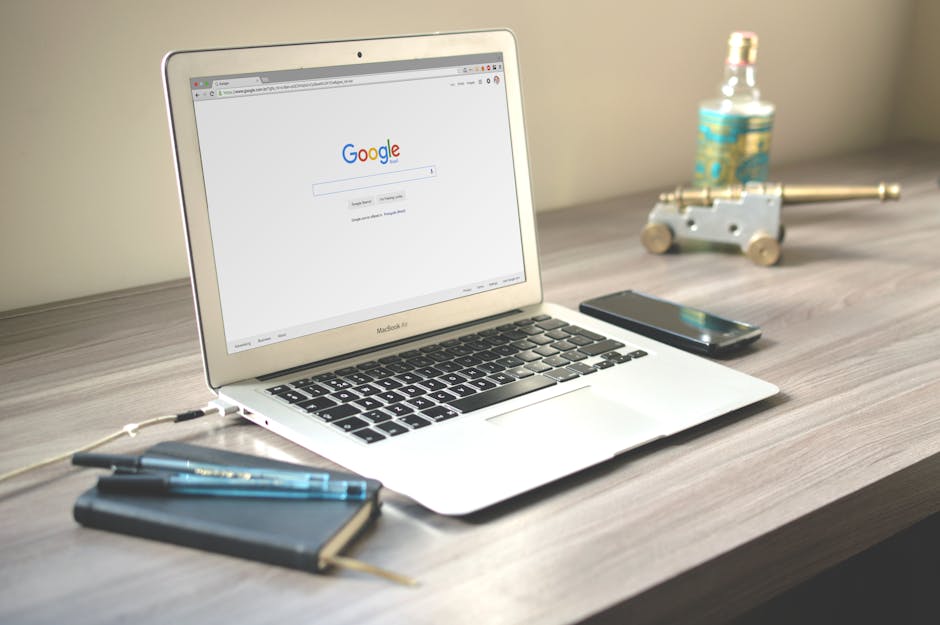Understanding the Difference Between Google Ads and PPC
If you’ve ever searched for ways to get your business noticed online, you’ve probably come across the terms “Google Ads” and “PPC.” These phrases are often used interchangeably, but they don’t mean exactly the same thing. Understanding the difference is key to making smart decisions about your digital marketing strategy.
In this guide, we’ll break down what PPC advertising is, how Google Ads fits into the picture, and why knowing the distinction can help you get better results from your online campaigns.
Google Ads vs. PPC
| Google Ads | PPC (Pay-Per-Click) |
|---|---|
| A specific advertising platform owned by Google | A broader advertising model used across many platforms |
| One implementation of the PPC payment model | The overall concept where advertisers pay per click |
| Includes Search, Display, Shopping, and YouTube ads | Encompasses all platforms using the pay-per-click model |
| Uses Google’s specific Quality Score system | Various platforms have their own quality metrics |
| Reaches users across Google properties and partner sites | Can include Google, Bing, Facebook, LinkedIn, and more |
When businesses talk about online advertising, they often use “Google Ads” and “PPC” interchangeably, but understanding the distinction is crucial for developing an effective digital marketing strategy.
PPC (Pay-Per-Click) is an advertising model where you pay each time someone clicks your ad. It’s a method used across various platforms and networks.
Google Ads, on the other hand, is Google’s specific implementation of the PPC model — the world’s largest and most popular PPC platform.
Think of it this way: PPC is the concept (like “social media”), while Google Ads is a specific platform using that concept (like “Facebook”).
Over 80% of businesses worldwide use Google Ads for their PPC campaigns, making it the dominant player in the space. However, knowing when to use Google Ads versus other PPC options can significantly impact your marketing ROI.

What is PPC advertising?
PPC (Pay-Per-Click) advertising is like setting up a toll road directly to your business — but here’s the beautiful part: you only pay when someone actually drives down it.
Instead of waiting months for organic traffic to build, PPC lets you buy visits to your website immediately. This digital marketing model works through an auction system where businesses bid on ad space related to specific keywords, audiences, or placements. When users search for those terms or match your targeting criteria, your ads enter the auction to compete for visibility.

What makes PPC so powerful is its combination of flexibility and control. You can set specific daily or monthly budgets, target exactly who you want to reach (whether by keywords, demographics, locations, or interests), and only pay when someone actually clicks your ad. Plus, you can track performance with detailed metrics and make real-time adjustments based on what’s working.
PPC falls under the broader umbrella of Search Engine Marketing (SEM), which includes all paid strategies to boost visibility in search results. While SEO is the long game of earning traffic organically, PPC delivers immediate visibility for businesses ready to invest.
How the PPC auction works
The PPC auction is much more sophisticated than simply giving ad space to whoever bids highest. Here’s the process that happens in milliseconds every time someone searches:
First, your advertiser’s bid sets the maximum amount you’re willing to pay for a click. But that’s only the starting point. The platform then evaluates your ad relevance — how well your ad matches what the user is looking for. Next comes the landing page experience assessment, where the quality and relevance of your destination page gets scrutinized.
These factors combine to create a quality metric (called Quality Score in Google Ads). Your bid amount multiplies by this quality metric to determine your Ad Rank and position.
This clever system prevents advertisers from simply buying their way to the top with irrelevant ads. Instead, it rewards those who create high-quality, relevant experiences for users.
For example, if your Quality Score is 8 (out of 10) and your competitor’s is 4, you could potentially pay half as much for the same ad position — or get a higher position without increasing your bid. This creates a powerful incentive to create better ads and landing pages, which ultimately benefits users.
Conversion tracking is another crucial piece of the puzzle. By implementing tracking pixels, you can measure meaningful actions users take afterward — purchases, sign-ups, form submissions, and more. This data helps you optimize campaigns for maximum ROI rather than maximum clicks.
Google Ads 101 — the world’s largest PPC platform
Ever wonder why Google Ads dominates the digital advertising landscape? It’s simple — with Google processing over 8.5 billion searches every day and capturing a whopping 92.26% of global search traffic, no other platform comes close to offering this level of reach and visibility.

When you dive into Google Ads, you’re actually accessing several powerful advertising networks, each with unique strengths:
The Search Network places those familiar text ads at the top and bottom of Google search results (you know, the ones with the little “Ad” label). These ads catch people exactly when they’re actively searching for what you offer — talk about perfect timing! If someone’s typing “plumber near me” or “best running shoes,” your business can be right there waiting.
Then there’s the Google Display Network (GDN), a massive collection of over two million websites reaching more than 90% of internet users worldwide. Your visual banner ads can appear on news sites, blogs, and even Google properties like Gmail and YouTube. This network excels at building brand awareness and reconnecting with previous website visitors through remarketing.
YouTube Ads deserve special attention — after all, YouTube is both the second-largest search engine and the premier video platform globally. Whether you choose skippable videos, non-skippable clips, short bumper ads, or overlay formats, you can tell your brand story in a way that text simply can’t match. Perfect for demonstrating products in action or creating emotional connections.
For e-commerce businesses, Shopping Ads are pure gold. These product-focused ads display images, prices, and store names directly in Google Search and the Shopping tab, creating a direct pipeline of qualified traffic to your product pages.
Behind all these ad formats is Google’s sophisticated Smart Bidding technology. These machine learning algorithms automatically optimize your bids for conversions based on countless signals that would be impossible to manage manually — making your advertising both smarter and more hands-off.
The Google Display Network alone reaches over 90% of internet users worldwide. This massive reach is one of Google’s most compelling advantages when you’re trying to understand the difference between Google Ads and PPC.
Ad Rank = Quality Score × Maximum Bid × Expected Impact of Ad Extensions
This clever formula means that a small business with super-relevant, high-quality ads can outrank bigger competitors who are bidding more but offering less relevant content. It’s Google’s way of keeping the playing field fair while ensuring users see the most helpful ads.
Costs and ROI benchmarks in Google Ads
Let’s talk money — what can you expect to pay and earn back with Google Ads? While these figures vary by industry, they provide helpful benchmarks for planning your campaigns.

For most industries, the average Cost-Per-Click (CPC) on the Search Network ranges from $0.11 to $0.50. Display Network clicks typically cost even less. However, competitive industries like legal services, insurance, and finance can see CPCs skyrocket to $5-$50+ per click. (Yes, some lawyers really do pay $50 every time someone clicks their ad — ouch!)
When it comes to Click-Through Rate (CTR), a top-position ad averages around 6.30% on search. Display ads naturally see lower CTRs, typically between 0.35-0.5%, since people are browsing content rather than actively searching.
Monthly budgets vary widely based on your goals and industry. Small businesses typically invest anywhere from $100 to $10,000 per month. While you can start testing with as little as $500-$1,000 monthly, your budget needs will depend on your competitive landscape and objectives.
The good news? Google PPC delivers an average 200% ROI — meaning for every $1 spent, businesses typically make $2 in return. That’s a pretty compelling reason to invest, though performance does vary based on how well campaigns are optimized and your conversion rates.
Your Quality Score has a massive impact on costs. Improving from a score of 5 to 7 can reduce your CPC by approximately 28%. Achieve the coveted perfect 10, and you might pay half what your average competitor does for the same position!
Understanding what is the difference between Google Ads and PPC isn’t merely academic — it helps you appreciate why Google’s combination of vast reach, targeting precision, and proven ROI makes it the cornerstone of most digital marketing strategies.

Why “Google Ads = PPC” is a misconception
Many clients say, “We’re doing PPC — you know, Google Ads.” This common misconception stems from Google’s dominance, but it’s like saying “Kleenex” when you mean “tissue.”
This equation is inaccurate for several important reasons:
First, it confuses terminology. PPC describes how you pay (per click), not where your ads appear. It’s a payment model, not a platform.
Second, the PPC concept extends far beyond Google. Microsoft Advertising, Facebook Ads, LinkedIn Ads, and many other platforms all use variations of the pay-per-click model, each with unique advantages for different business goals.
Third, even within Google Ads, not all advertising options follow the strict PPC model. Some display and video campaigns can be purchased on a cost-per-thousand-impressions (CPM) basis instead.
This misconception can lead to costly strategic errors. If you equate all PPC advertising with Google, you might miss valuable opportunities on platforms that could better serve your specific needs.
For example, a local law firm targeting business executives might find LinkedIn’s professional targeting more effective than Google’s keyword approach, despite both using PPC models. Similarly, a boutique might see better results with Instagram’s visual platform than with text ads on Google Search.
When to choose Google Ads vs other PPC channels
Choosing the right PPC platform isn’t a one-size-fits-all decision. Several key factors should guide your decision:
Campaign Goals matter tremendously. If you’re focused on building awareness, display networks and social media platforms typically deliver broader reach at lower costs.
Looking to tell your brand story? YouTube and social video ads excel at emotional storytelling. But when you need conversions now, Google Search ads capture those high-intent users actively seeking solutions.
And don’t forget about retention — remarketing across Google’s Display Network and social platforms helps you reconnect with existing customers.
Where your audience spends their time online should heavily influence your platform choice. Google dominates global search with over 92% market share, making it the obvious choice for most businesses. However, if you’re targeting specific international markets, platforms like Yandex (Russia) or Baidu (China) might deserve your attention. For businesses focused on local customers, Google’s local search capabilities are particularly powerful for connecting with nearby shoppers.
The intent level of your target audience is another crucial consideration. High-intent searches like “buy women’s running shoes near me” perform beautifully on Google. But if your customers are in early stages, visual platforms like Instagram or Pinterest often deliver better results. B2B research frequently begins on LinkedIn or industry-specific platforms before moving to search engines.
Your budget size will also impact platform selection. Smaller budgets ($500-2,000/month) might stretch further on platforms with lower competition. With larger budgets, you can support multi-platform approaches that maximize reach and provide more optimization opportunities.
Remember that testing budgets need to be sufficient to gather meaningful data—spreading too thin across multiple platforms often leads to inconclusive results.
The competitive landscape in your industry should influence your strategy. Analyze where competitors are advertising and look for potential gaps. Some industries face extremely high CPCs on Google (legal, insurance, financial services often exceed $50 per click!), making alternative platforms more cost-effective. Niche products might find more targeted, affordable traffic on specialized platforms.
Consider your integration needs as well. Google Ads integrates seamlessly with Google Analytics, YouTube, and other Google properties, creating powerful data synergies. Social PPC platforms naturally complement social media marketing efforts. Your existing marketing stack should inform which platforms make the most sense.
We typically recommend starting with Google Ads due to its strong intent-based targeting and broad reach, then expanding to additional platforms as budgets and strategies evolve.
Frequently asked questions about Google Ads and PPC
Is Google Ads the only way to run PPC campaigns?
No, Google Ads is only one player in the PPC universe, albeit the biggest one. While Google dominates the search landscape with an impressive 92.26% global market share, there’s a whole world of PPC platforms beyond Google’s borders.
Think of it like this: Google Ads is to PPC what Kleenex is to facial tissues — the brand name that’s become synonymous with the category, but definitely not the only option available.
Other popular PPC platforms include:
Microsoft Advertising (formerly Bing Ads) connects you with users across Bing, Yahoo, and AOL — often reaching a slightly older, more affluent demographic than Google.
Social media PPC options are abundant, with Facebook, Instagram, LinkedIn, Twitter, Pinterest, TikTok, and Snapchat all offering their own unique flavors of pay-per-click advertising, each with distinct audience characteristics.
Amazon Advertising has become a powerhouse for e-commerce businesses, allowing you to place your products directly in front of shoppers with high purchase intent.
For our Utah clients, we typically recommend starting with Google Ads as the foundation of most PPC strategies. Its best reach and intent-based targeting make it an excellent starting point. Then, as your comfort level grows and data accumulates, we can strategically expand to additional platforms that align with your specific business goals.
How do targeting options differ between Google Ads and social PPC?
The targeting difference between Google Ads and social PPC platforms boils down to a simple distinction: Google targets what people are looking for, while social platforms target who people are.
Google Ads excels at capturing existing demand through:
- Keyword targeting that connects with users actively searching for solutions
- In-market audiences that identify people showing purchase signals
- Affinity audiences based on long-term interests and habits
- Remarketing to reconnect with previous website visitors
- Geographic targeting from broad regions down to specific neighborhoods
Social PPC platforms shine at creating demand through more detailed personal targeting:
- Rich demographic data beyond basics (education, income, relationship status)
- Detailed interest targeting based on pages liked, groups joined, and content engaged with
- Behavioral targeting reflecting actions taken both online and offline
- Professional attributes like job title and company size (especially on LinkedIn)
- Life event targeting for moments like engagements, moves, or new jobs
I like to explain it to our Utah County clients this way: Google Ads is like fishing where the fish are already biting (people actively searching), while social PPC is like creating such an enticing lure that fish who weren’t even hungry suddenly want to bite.
A perfect example is a local jeweler in American Fork. With Google Ads, they’d target people searching “engagement rings Utah County.” With Facebook Ads, they’d target people who just updated their relationship status to “In a relationship” within 50 miles of Provo — people who aren’t searching yet but might be interested soon.
Will Google Ads clicks improve my organic SEO rankings?
This is one of the most persistent myths in digital marketing, and I’m happy to set the record straight: No, Google Ads clicks do not directly impact your organic SEO rankings.
Google maintains a strict church-and-state separation between its advertising platform and organic search algorithm. This separation is fundamental to Google’s business model — if businesses could simply pay to improve organic rankings, it would undermine the integrity of search results and user trust.
As Google’s own documentation clearly states, running paid campaigns has zero direct influence on where your website appears in organic search results. The systems are entirely separate, using different algorithms and ranking factors.
That said, there are some indirect ways Google Ads can complement your SEO efforts:
Keyword intelligence from your PPC campaigns can reveal which terms actually convert, helping you prioritize SEO targets more strategically.
Increased brand awareness from ads often leads to more branded searches, which can appear as positive organic signals to Google.
PPC landing pages can be quickly tested for conversion performance before investing heavily in SEO for those pages.
SERP domination happens when you appear in both paid and organic results, effectively doubling your visibility for important searches.
At Revity, we’ve found that our most successful clients here in Utah view Google Ads and SEO not as competitors for budget, but as complementary strategies working together. PPC delivers immediate traffic while you build your organic presence, and both channels provide valuable data to improve the other.
Think of them as two separate paths leading to the same destination — more qualified visitors to your website.
Work with Revity Marketing Agency
If you’re serious about growing your business and want to see real, measurable results from your marketing, it’s time to partner with experts who know how to make every click count. At Revity Marketing Agency, our team specializes in crafting high-impact PPC and SEM strategies custom to your unique goals.
Don’t leave your digital success to chance. Let us help you drive targeted traffic, boost your brand visibility, and maximize your return on investment. Contact Revity today to find out how our proven marketing solutions can take your business to the next level. Your growth starts with a conversation — reach out now and let’s build your success together!
![]()







